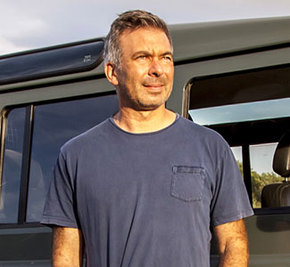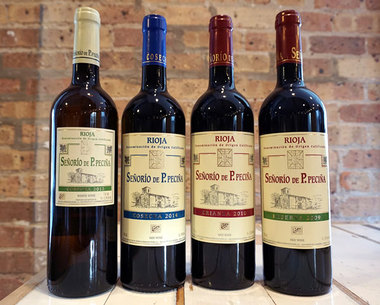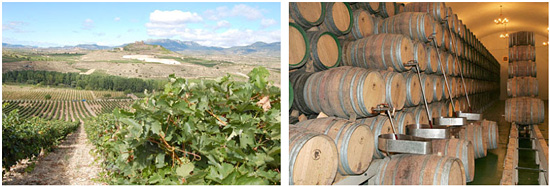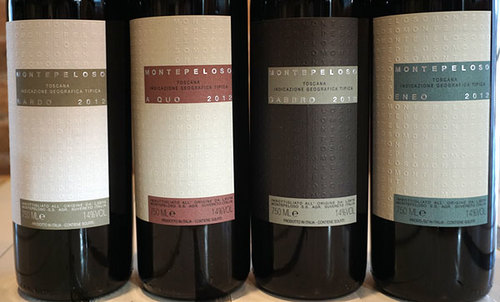| March 2016 | ||
| « Feb 2016 | News | Apr 2016 » |
March 16, 2016
Montepeloso - In the Ranks of the Elite

The tale of the Super Tuscan is one for the storybooks: iconoclast winemakers reinvigorated Tuscany’s winemaking in the seventies, breathing new life and new international interest into a market that was floundering from straw-covered, mediocre, mass-produced Chianti. In 1968, Marquis Mario Rocchetta’s Tenuta San Guido released ‘Sassicaia,’ essentially inventing the category by eschewing the DOC laws, introducing French grapes to the blend, and claiming the less prestigious “table wine” designation as a badge of honor. When Piero Antinori released ‘Tignanello’ in 1971, this tinkering in Tuscany became a bona fide movement.
Several decades in, Super Tuscan winemakers still have that experimental spirit, but the new wave has shifted focus from grapes to terroir. Maremma, the coastal region west of Chianti, is ground zero. It’s come to be called Tuscany’s “Gold Coast,” as well as the “Etruscan Riviera.” Though much of it was covered by impenetrable swampland until Mussolini drained it in the 1930s, today it’s vinous paradise. It’s one of the warmer climates in Tuscany, but with a coastal influence and sloping hillsides, making it very hospitable to the vine. According to Wine Spectator: “It’s similar to that of Sicily, but less severe, which makes it more manageable for a wine producer. The sun gives soft tannins, and this is what the modern consumer is looking for. But the softness here is a product of the vineyard, not the winery.” (10/2006) ‘Sassicaia’ was born in the Maremma commune of Bolgheri, and achieved such notoriety that the monopole of Bolgheri Sassicaia was designated. But it’s Suvereto, in the south, that is currently garnering attention.
 Swiss-Italian historian Fabio Chiarelotto recognized Suvereto’s potential and purchased the Neukom estate in 1998, well before the region was elevated to DOCG status in 2011. He renamed the estate Montepeloso and worked to completely overhaul the vineyards. Planted on a gentle hillside of chalky gravel and clay, with warm, windy days, his vineyards produce supple, sumptuous, and aromatic wines. In a word: sexy. 2006 marked the beginning of the estate’s “mature phase,” when the effects of regrafting and retraining his vines really came to fruition. The estate has been championed by critics and drinkers alike, especially Antonio Galloni, who predicted in 2014 that “Montepeloso will soon join the ranks of the elite, if it hasn’t already.” The fact that Chiarelotto only produces small lots of each wine adds to the cult status he’s building.
Swiss-Italian historian Fabio Chiarelotto recognized Suvereto’s potential and purchased the Neukom estate in 1998, well before the region was elevated to DOCG status in 2011. He renamed the estate Montepeloso and worked to completely overhaul the vineyards. Planted on a gentle hillside of chalky gravel and clay, with warm, windy days, his vineyards produce supple, sumptuous, and aromatic wines. In a word: sexy. 2006 marked the beginning of the estate’s “mature phase,” when the effects of regrafting and retraining his vines really came to fruition. The estate has been championed by critics and drinkers alike, especially Antonio Galloni, who predicted in 2014 that “Montepeloso will soon join the ranks of the elite, if it hasn’t already.” The fact that Chiarelotto only produces small lots of each wine adds to the cult status he’s building.
He makes four cuvées. ‘Nardo’ (Tuscan dialect for lavender) is an unfiltered blend of mostly Sangiovese, with Montepulciano and Cabernet Sauvignon rounding out the mix. He never makes more than 400 cases a year. ‘Gabbro’ is his ode to Cabernet Sauvignon, and it truly shows the heights that Cab can achieve in this terroir. It’s 100 percent Cab from 35 year old vines, and he only makes 200 cases. James Suckling placed Gabbro on this top 100 list for 2014. ‘Eneo’ is his Sangiovese-based entry level wine, with Colorino and Merlot; ‘A Quo’ is a blend of Cabernet Sauvignon, Montepulciano, Sangiovese, Marselan, and Alicante Bouschet. The common thread among these cuvées is that each achieves a finesse that belies its opulence; the wines have an intriguing yin yang that appeals to both intellect and an unbridled sense of hedonism. And the exciting part? This is just the beginning for Montepeloso. Slowly and steadily, Chiarelotto is building a ground swell, and the wines will knock you out.
March 03, 2016
Rooted in the Old School
 What’s old is new again, as the saying goes. Handlebar mustaches, baby names from the turn of the (20th) century, Star Wars, vinyl records… and old-school Rioja. Rioja, the much-beloved power player in Spanish wine, has gone through its share of identity crises—from the industrialized high-yield plonk of the 70s to the pumped-up blockbusters of the 90s and 2000s. Robert Parker gets blamed for a lot of the sins of the modern—overly extracted, overly ripe, overly alcoholic and bombastic wines—but, whatever the cause may be, there was hardly a winemaking country anywhere in the 90s and early 2000s that was immune to this style’s allure. And Spain was no exception. There remains a stylistic divide in the heart of Rioja between the traditional and the modern.
What’s old is new again, as the saying goes. Handlebar mustaches, baby names from the turn of the (20th) century, Star Wars, vinyl records… and old-school Rioja. Rioja, the much-beloved power player in Spanish wine, has gone through its share of identity crises—from the industrialized high-yield plonk of the 70s to the pumped-up blockbusters of the 90s and 2000s. Robert Parker gets blamed for a lot of the sins of the modern—overly extracted, overly ripe, overly alcoholic and bombastic wines—but, whatever the cause may be, there was hardly a winemaking country anywhere in the 90s and early 2000s that was immune to this style’s allure. And Spain was no exception. There remains a stylistic divide in the heart of Rioja between the traditional and the modern.
Pedro Peciña and his son (also named Pedro), however, have never had a doubt about which side they land on. Since they began their bodega Hermanos Peciña in 1992 (deep in the throes of the bigger-is-better trend), they have been firmly rooted in the Rioja of a century ago—using neutral American oak barriques, native yeasts, open-air racking by hand. Nothing is added or manipulated in the cellar. Completely natural, they never filter or fine their wines. They don’t cold stabilize, either—they achieve stabilization through time, leaving the wines in barrel for long stretches. In fact, they age far longer than DO regulations require, and their wines exude an elegant, cashmere-like grace that can hold up for the long haul.
The wines of Rioja run as fluidly in the Peciña veins as the Ebro River below their property. Located in a hilltop medieval village called San Vicente, the family has been growing grapes for 5 generations. Pedro, Jr., began when he was 14, and, after completing his enological studies, returned to become the full-time winemaker. They farm 50 hectares of chalky soil, mostly planted to Tempranillo, at 1,600 feet elevation.

It doesn’t hurt that the founder, Pedro Peciña, cut his teeth at one of the oldest bodegas in the country. For 20 years, Peciña was the vineyard manager for La Rioja Alta, a house that has been highly regarded since Rioja’s big boom in the 19th century. La Rioja Alta’s style was heavily influenced by the Bordelais who turned to the region for a new source of wine during the phylloxera devastation of their own vineyards. To this day, traditional Rioja is reminiscent of classic Bordeaux, though with a decidedly Spanish accent. The Bordelais introduced aging in neutral barriques, but the Spaniards attached themselves to American instead of French oak, thanks to both cost and convenience. This is an important difference between the so-called moderns and traditionals. The modern style relies much on newer and smaller French barrels, which contribute more wood flavor and tannins to the wine. Peciña’s larger, neutral casks engender a subtle softness as the wines age, and they are gorgeous upon release.
On Feb 16, the UK Telegraph reported that, within the next three years, the British could very well be drinking more Rioja than French wine, a startling trend considering the UK’s long-term Francophilia. Likewise, the Drinks Business reported: “The U.S. is a great place to sell Spanish wine right now - there’s a big buzz around Spanish wines in trendy restaurants in New York and San Francisco.” At a time when the Spanish wine category continues to gain speed, Peciña represents a faction of traditionalists who are making sure that what’s in our glass connects to its place and its history, instead of getting us lost in a sea of globalized, indistinct powerhouse wines. Peciña helps pull us back to their little hill over the Ebro River, where the family has been passing down grape growing know-how for decades. Is this romanticizing the past? Perhaps. But the wines are as contemporary as you could ask for — aromatically complex and rich with a touch of honest rusticity.
Hermanos Pecina 2013 Blanco Cosecha Rioja DOCa
Hermanos Pecina 2014 Tinto Cosecha Rioja DOCa
Hermanos Pecina 2011 Crianza Rioja DOCa
Hermanos Pecina 2009 Reserva Rioja DOCa
March 03, 2016
Water & Vodka
 Water sources, and their unique and distinctive attributes, have a huge impact on the specific flavors and qualities of spirits from around the world. Water quality and purity is even more important for clear spirits, where there are no barrels or aging processes to help produce the desirable flavor profile.
Water sources, and their unique and distinctive attributes, have a huge impact on the specific flavors and qualities of spirits from around the world. Water quality and purity is even more important for clear spirits, where there are no barrels or aging processes to help produce the desirable flavor profile.
Did you know that the city of Geneva, Illinois spent $28 million on a reverse osmosis water filtration system that was completed in 2008? The water in Geneva, IL is near perfect with the city having to add back minerals!
Herrington Premium Vodka (80 proof) is made in Geneva, Illinois by Fox River Distilling. Fox River Distilling set up shop in Geneva primarily to take advantage of the high water quality. Herrington Premium Vodka is distilled four times and charcoal filtered to provide a smooth product. It is exceptional, and perhaps we owe some thanks to the water!

